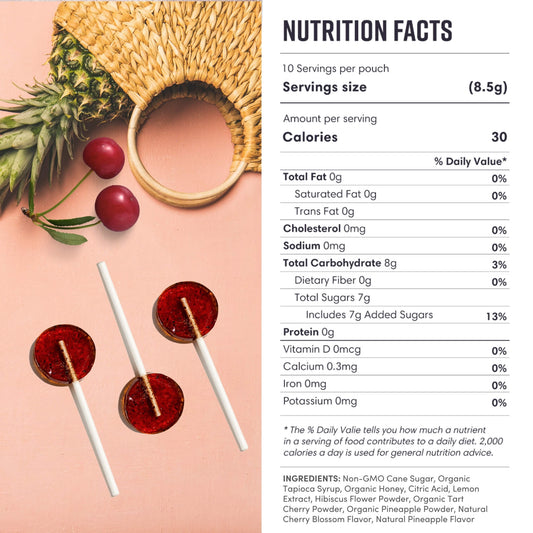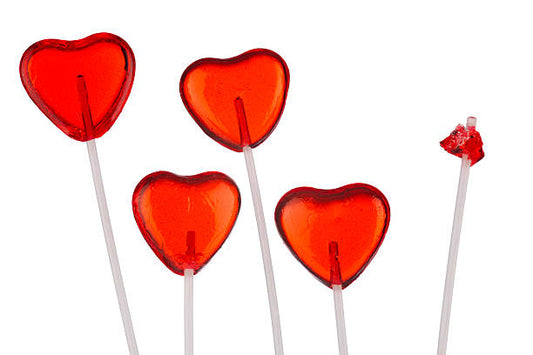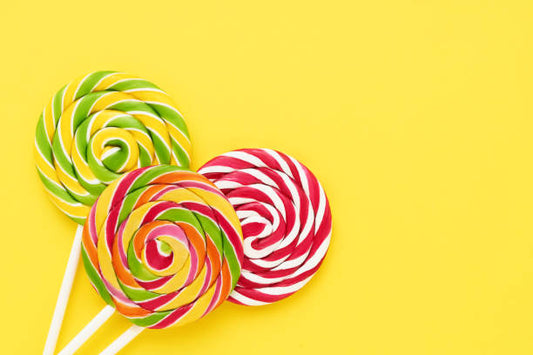Lollipop candy has long been a joyful treat, charming our hearts and tantalizing our taste buds with its vibrant colors and delightful flavors. In this article, we’ll take a cheerful journey through the fascinating history of lollipops, uncovering their origins, evolution, cultural significance, and special place in today’s candy market.
The Origins of Lollipop Candy
The journey of the lollipop begins in the ancient world, where various civilizations crafted sweet confections. These early sweet treats were not the lollipops we know today, but they laid the essential groundwork for what was to come.
Ancient Civilizations and Sweet Treats
In ancient Egypt, people enjoyed honey-coated fruits and nuts, symbolizing luxury and vitality. This concept of combining sweetness with a stick-like structure can be seen as a precursor to modern lollipops, where sweetness is tasted along with convenience.
Similarly, ancient Romans had their version of candied items. They boiled honey and added dew, which may resemble the flavorful concoctions that would eventually lead to the creation of lollipops. This combination of sugar and stick-like presentations hints at the ingenuity of sweet treat creation throughout history.
The Middle Ages and the Advent of Sugar
As trade routes opened and sugar became more accessible in Europe during the Middle Ages, confections flourished. Sugar, previously a rare commodity, transformed the culinary landscape, leading to an explosion in candy-making techniques.
During this period, sweet treats began to evolve further. Medieval concoctions included sugar-coated almonds served on a stick, which can be viewed as a distant relative of the lollipop. This evolution marks a significant step toward the colorful and flavor-rich lollipops that we enjoy today.
Moreover, the art of candy-making began to spread across Europe, with each region adding its unique twist. In France, for instance, the invention of hard candies paved the way for the creation of more complex flavors and shapes. The introduction of flavoring agents such as fruit extracts and spices allowed for a greater variety of tastes, which would eventually influence the development of the lollipop. As these techniques were refined, the idea of a sweet treat on a stick became increasingly popular, leading to the first recognizable forms of lollipops in the 19th century.
The Industrial Revolution and Mass Production
The Industrial Revolution marked a significant turning point in the history of lollipops. With advancements in machinery and production techniques, candy-making shifted from small-scale artisanal practices to large-scale manufacturing. This transition allowed for the mass production of lollipops, making them more accessible to the general public.
During this time, innovative candy makers began experimenting with flavors and colors, resulting in the vibrant and diverse lollipops we see today. The introduction of new ingredients, such as artificial flavorings and colorings, further expanded the possibilities for lollipop creation. This era not only made lollipops a beloved treat but also established them as a staple in candy shops and grocery stores across the globe, cementing their place in popular culture.
The Lollipop's Journey to America
The story of how lollipop candy arrived in America is a delightful blend of creativity, cultural sharing, and entrepreneurial spirit. When European settlers ventured to the New World, they brought along their candy-making traditions, setting the stage for what would become American lollipops. These early pioneers made the most of local ingredients, skillfully mixing their cherished old-world recipes with the exciting new flavors and textures they discovered in America’s diverse landscape. This wonderful combination not only led to the creation of unique treats but also showcased the rich tapestry of cultures coming together in the colonies.
Early American Candy Makers
In the 19th century, American candy makers set off on exciting experiments with a variety of flavors and shapes. Each confectioner cherished their unique secret for crafting these delicious, sugary creations. The very first commercial lollipop is thought to have been made in the early 1900s, and it quickly became a beloved treat all across the country. This delightful sweet soon won the hearts of both children and adults, often bringing joy during fairs, parades, and other wonderful community gatherings.
One notable figure in this evolution was George Smith, who coined the term ‘lollipop’ for his confections. He promoted his product in candy shops and through street vendors, laying the groundwork for what would become a household name. Smith's marketing strategies were innovative for the time, as he understood the importance of branding and customer engagement, ensuring that his lollipops were not just treats but a part of American culture.
The Industrial Revolution and Mass Production
The Industrial Revolution played a crucial role in the production of lollipops. As manufacturing techniques advanced, candy makers could produce sweets on a large scale, making them more accessible to the general public. The introduction of assembly line production methods allowed for a significant increase in output, which meant that lollipops could be sold at lower prices, further boosting their popularity.
Innovations in machinery allowed for uniform shapes and wrapping methods, which were essential for packaging lollipops. By the end of the 19th century, lollipops began to appear in a variety of flavors, making them even more appealing to consumers. The introduction of vibrant colors and creative packaging designs also played a key role in attracting attention. Candy makers started to experiment with flavors like cherry, grape, and even more exotic options such as root beer and butterscotch, ensuring there was a lollipop for every palate. This era marked the beginning of lollipops as a staple in American candy culture, paving the way for the diverse array of flavors and styles we enjoy today.
The Evolution of the Lollipop
As lollipops continued to gain popularity, their physical form and flavors evolved significantly. The introduction of different styles, innovative ideas, and creative marketing strategies transformed the humble lollipop into a beloved treat around the globe.
The Introduction of the Stick
The stick is arguably the defining feature of a lollipop. While earlier candy treats were often consumed directly, the addition of a stick revolutionized the way sweets were enjoyed. This practical design allowed for ease of handling, especially among children.
The stick also opened up exciting new ways for creative displays in shops! With their colorful and whimsical designs, lollipops turned into more than just a tasty treat; they became a visual delight that captured the attention of eager shoppers. Plus, the stick served as a perfect canvas for branding, allowing manufacturers to customize them with fun logos and vibrant colors, making them instantly recognizable and appealing to everyone. This clever branding strategy not only boosted the lollipop's popularity but also brought back sweet memories for many adults who fondly recalled their favorite childhood treats.
The Variety of Flavors and Shapes
Over time, lollipops transitioned from simple flavors to an expansive array of options, including fruity, sour, minty, and even spicy variations. Imaginative shapes ranging from cartoon characters to geometric designs have also emerged, making lollipops a versatile treat for all ages.
-
Popular flavors include:
-
Cherry
-
Grape
-
Watermelon
-
Bubble gum
-
Spicy chili mango
This abundance of options has allowed lollipops to remain relevant in a constantly changing candy market. Furthermore, the rise of gourmet lollipops has introduced a new level of sophistication to this classic treat. Artisanal candy makers experiment with unique ingredients, such as organic fruit purees and exotic spices, creating lollipops that appeal to adult palates. These gourmet variations often come in elegant packaging, turning them into perfect gifts for special occasions and showcasing the lollipop as not just a children's treat but a sophisticated indulgence for all ages.
The creative potential of lollipops extends beyond flavors and shapes; they have also become a popular medium for artistic expression. Candy artists craft intricate designs, layering colors, and flavors to create stunning visual masterpieces that are as much a feast for the eyes as they are for the taste buds. This artistic approach has led to the emergence of lollipop-making workshops, where enthusiasts can learn the craft and create their own unique confections, further solidifying the lollipop's place in contemporary culture.
Lollipops in Pop Culture
Lollipops bring so much joy, reaching far beyond candy stores and making their mark in our entertainment and symbolism. Their unique charm has truly carved out a special spot in popular culture!
Lollipops in Movies and Music
Lollipops have made numerous appearances in movies and songs, often symbolizing childhood innocence or carefree joy. Iconic scenes featuring characters enjoying lollipops evoke a sense of nostalgia and happiness. For instance, in classic films like "Charlie and the Chocolate Factory," the whimsical world of Willy Wonka is filled with fantastical confections, with lollipops standing out as a delightful representation of the magic of childhood. Such portrayals not only highlight the allure of sweets but also serve as a reminder of the joy found in simple pleasures.
In popular music, lollipops are frequently referenced as metaphors or playful imagery. From classic tunes to contemporary hits, they continue to capture the spirit of fun and indulgence. Songs like "Lollipop" by The Chordettes and "Lollipop" by Lil Wayne showcase how this candy can symbolize love, desire, and youthful exuberance. The catchy rhythms and playful lyrics often invite listeners to reminisce about their own carefree days, reinforcing the lollipop's role as a cultural icon that transcends generations.
The Lollipop as a Symbol
Beyond entertainment, lollipops have become symbols of various emotions and experiences. They often represent childhood, joy, and simplicity, making them a perfect gift for celebrations and special occasions. Birthdays, holidays, and even graduations are often marked by the presence of lollipops, which add a touch of sweetness to these milestones. Their vibrant colors and playful shapes make them visually appealing, further enhancing their status as a beloved treat that brings smiles to the faces of young and old alike.
Additionally, lollipops are used in marketing strategies for products aimed at younger audiences, reinforcing their association with fun and excitement. Brands often leverage the playful nature of lollipops in their advertising campaigns, creating a sense of whimsy that resonates with children and parents alike. From brightly packaged lollipop-themed snacks to promotional giveaways at events, the candy's cheerful image helps to establish a connection with consumers, making it a staple in the world of marketing aimed at evoking joy and nostalgia.
The Modern Lollipop and Its Impact
In the contemporary candy landscape, lollipops stand strong alongside an array of other confectioneries. Their adaptability and appeal have allowed them to thrive, even with changing consumer preferences towards health-conscious options.
Lollipops and the Global Candy Market
The global candy market has seen a robust demand for lollipops, with numerous brands competing for consumer attention. Innovative marketing techniques and clever branding strategies have helped maintain their popularity.
Market research reveals that lollipops are a beloved treat in many regions, showcasing delightful variations that reflect local tastes and preferences. This diversity wonderfully enriches the global candy culture! For example, in Japan, lollipops often come in exciting flavors like matcha and sake, which charm the local palate. Meanwhile, in Latin America, the scene is vibrant with spicy and fruity combinations that are simply irresistible. Additionally, the growing trend toward health-conscious consumption has led to the rise of organic lollipops made with natural ingredients and free from artificial additives, appealing to health-focused consumers. These regional creations and the introduction of organic options not only delight diverse consumers but also celebrate cultural heritage through the art of confectionery.
The Future of Lollipops
As we look ahead, lollipops are set to welcome exciting new innovations in flavors, shapes, and even healthier alternatives. With health trends on the rise, manufacturers are getting creative by using organic ingredients, offering reduced sugar options, and crafting functional candies that support wellness, like those delightful treats from Mama Bear Organics!
This adaptability will ensure that lollipops continue to hold a cherished place in the hearts of candy lovers around the world, bridging generations and new trends. Additionally, the rise of social media has transformed how lollipops are marketed, with visually striking designs and unique flavor combinations becoming viral sensations. Brands are harnessing platforms like Instagram and TikTok to engage with younger audiences, creating a buzz around limited-edition flavors and collaborations with popular influencers. This digital presence not only boosts sales but also fosters a community of candy enthusiasts eager to share their experiences.
The sustainability movement is influencing lollipop production, with companies exploring eco-friendly packaging and sourcing ingredients from sustainable farms. This shift not only appeals to environmentally conscious consumers but also positions lollipops as a modern treat that aligns with global efforts to reduce waste and promote ethical consumption. As these trends continue to evolve, the lollipop will undoubtedly adapt, ensuring its relevance in a rapidly changing market. Whether a treat for children or a nostalgic indulgence for adults, lollipops remain a symbol of joy, creativity, and sweetness across generations.










